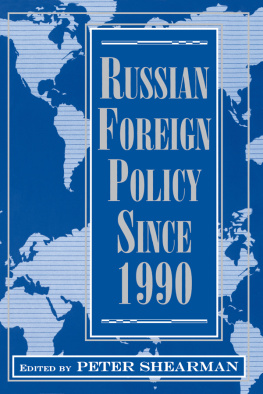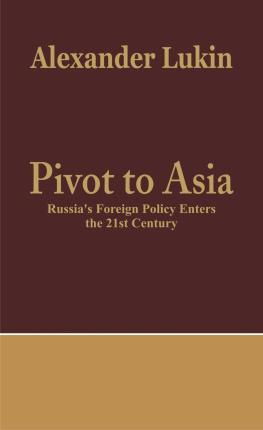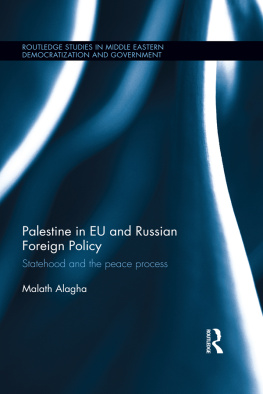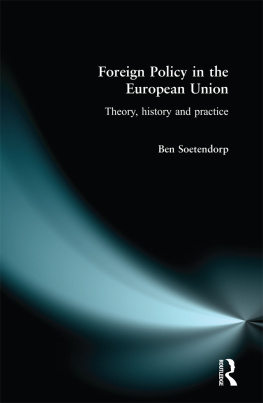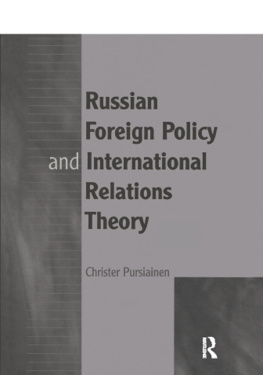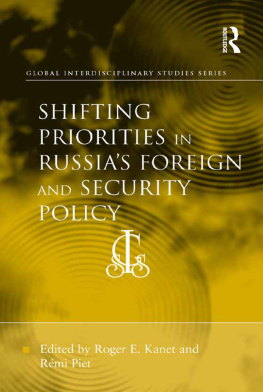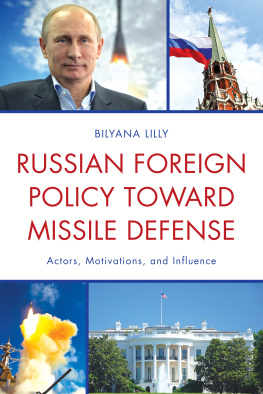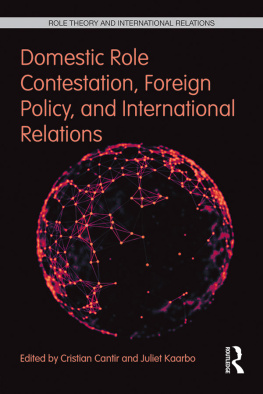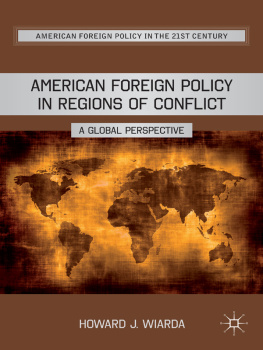First published 1995 by Westview Press
Published 2018 by Routledge
711 Third Avenue, New York, NY 10017, USA
2 Park Square, Milton Park, Abingdon, Oxon OX14 4RN
Routledge is an imprint of the Taylor & Francis Group, an informa business
Copyright 1995 Taylor & Francis
All rights reserved. No part of this book may be reprinted or reproduced or utilised in any form or by any electronic, mechanical, or other means, now known or hereafter invented, including photocopying and recording, or in any information storage or retrieval system, without permission in writing from the publishers.
Notice:
Product or corporate names may be trademarks or registered trademarks, and are used only for identification and explanation without intent to infringe.
Library of Congress Cataloging-in-Publication Data
Russian foreign policy since 1990 / edited by Peter Shearman,
p. cm.
Includes bibliographical references and index.
ISBN 0-8133-8778-7ISBN 0-8133-2633-8 (pbk.)
1. Russia (Federation)Foreign relations. I. Shearman, Peter,
1950- .
DK510.764.R87 1995
327.47dc20
94-42983
CIP
ISBN 13: 978-0-8133-2633-7 (pbk)
This book is the product of a conference that did not take place. Due to both a lack of funds and difficulties in getting all contributors to Melbourne at the same time, a planned conference on Russian foreign policy had to be cancelled. It was nevertheless considered worthwhile pursuing the original ideato produce a book that would provide a comprehensive coverage of Russias foreign relations with the most important countries and regions of the world. It is important to chronicle and assess these early, formative years in Russias foreign relations following the disintegration of the Soviet Union, both to better understand the dynamics of policy making and to be better able to predict likely future developments. The purpose of this volume is to improve Western understanding of the sources, objectives, and impact of contemporary Russian foreign policy.
I would like to acknowledge here the hard work put in by Craig Lonsdale, professional officer of the Department of Political Science at the University of Melbourne. He gave technical help at many stages and put the book into camera-ready form. I also thank Nikki Muldoon for her library assistanceand apologize for putting her to work when she was supposed to be on her summer vacation from Ireland. But she did volunteer! Thanks also to Remy Davison and Tony Phillips of Melbourne University for help in editing. Ita Shearman, as always, has been a great support. I would like to thank my sons, Peter and Michael, for providing me with pleasurable distractions that always reminded me what life was really all about. And thank you to Rebecca Ritke of Westview Press for her encouraging e-mail messages and useful and constructive suggestions.
Peter Shearman
Melbourne
1
Soviet Foreign Policy, 1917-1991
Peter Shearman
Introduction
It has become common to talk of the turbulence in world politics that marks our time. With the end of the Cold War and the spectacular demise of communism in the late twentieth century, old certainties have given way to confusion as the world crosses the threshold of a new era. The world as we knew it is being remade in front of our very eyes. It is difficult enough trying to make sense of transformative dynamics in global politics as they take place all around usseeking to understand, as it were, moving targets on their way to unknown destinations. It is doubly difficult when we have lost confidence in the theories and approaches that dominated academic studies on international relations and Soviet and communist politics during the Cold War period. Realism as a political theory failed to predict the end of great-power rivalry, the unilateral Soviet withdrawal from its sphere of influence, and the rise of nationalism. Kremlinology and Sovietology gave no indications of the imminent collapse of the neo-Stalinist communist systemindeed, most Soviet area specialists, right up to the end, were confidently predicting the continuing territorial integrity and stability of the Soviet state.

